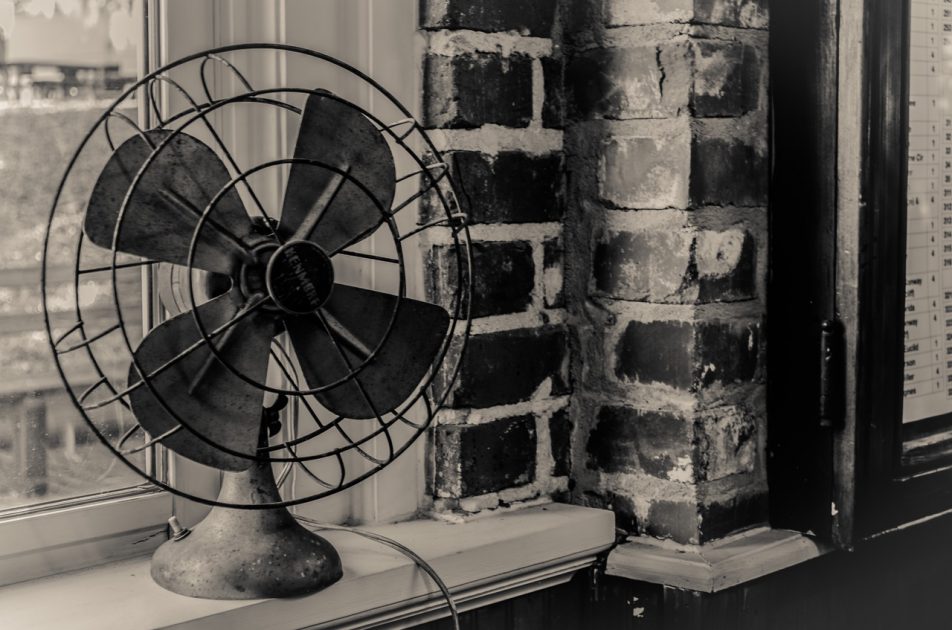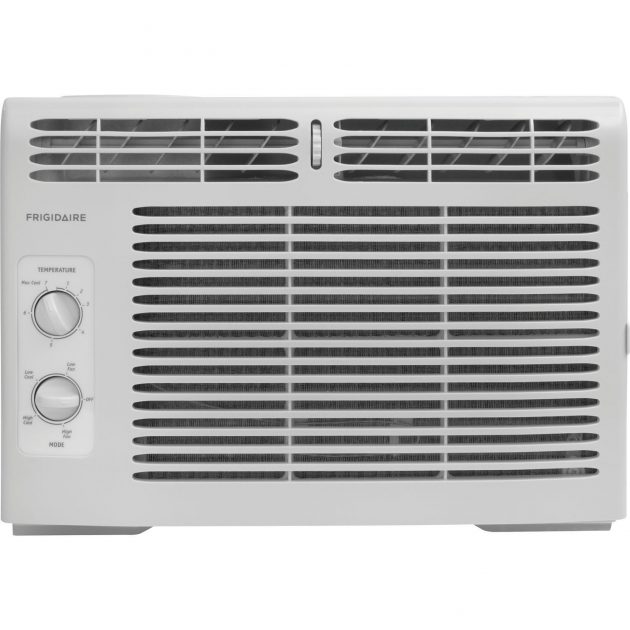When it comes to living in a tiny home, there’s a lot to take into consideration. It's not always easy to create a comfortable environment when you have such a limited amount of space to work with. One crucial factor when it comes to your comfort is the temperature. As summer quickly approaches, we are wondering, "what are our cooling options?" Here are some examples of systems to consider for your next tiny house air conditioner.
Ceiling, Window, Floor and Desk Fans

As the budget-friendly tiny house air conditioner option, fans have proven their worth for decades when it comes to cooling off an environment. They can do the same for your tiny home. For ceiling fans, don’t forget to set the direction your fan blades to rotate counterclockwise in the summer and clockwise in the winter. The fans location can also make an enormous difference in how effective it is. Whether you’re looking to install a ceiling fan inside your tiny house, place a box fan in the window, or simply get a desktop fan to put on the counter, the cool breeze will help to cool your tiny home off by a few degrees.
Roof Vent Fans
If you vent your house properly, you can sometimes get away with not even needing a tiny house air conditioner. Since heat naturally rises, an RV style roof vent can help to keep your tiny home cool. The question is, how many should you install? If you’ve made a mistake while building your tiny house, RV vent fans can easily be installed via a tiny hole you cut in the roof. Just be careful during the installation process because if it’s not sealed properly, you'll cause leaks in your tiny home. Another thing to take into consideration is running electricity to power your RV vent fan. Another important thing about roof vent fans is that they use minimal power when operated at night. Simply open a few windows, turn on the fan, and the chilly night air will get pulled into your tiny house as the warm air gets pushed out through the roof. You don't see these fans as often in tiny houses, but you would be hard pressed to find an RV without one, and for good reason.
Window AC Units

When it comes to installing an AC unit in your small home, the most affordable option for cooling would be to install a window unit. Not surprisingly, it seems to be the most popular as well. It’s easy to retrofit a tiny home with a window unit, and you can pick one up for as little as a few hundred bucks. When you’re going to pick one up, I highly suggest choosing to purchase a window unit that is Energy Star Qualified.
Roof Mounted AC Units
If your tiny home happens to live on wheels, you may want to consider installing an RV-style or roof mounted unit. The benefit to this style is that, unlike other traditional units, complete roof mounted systems can be used for both air conditioning as well as heating. They provide a perfect “out of sight, out of mind” setup and can even be used with a small ductwork system…. within reason of course. Although one of the downsides of roof mounted AC units is that they need to be installed on a flat surface. So, this would only work for specific tiny houses.
Mini-splits

Mini-splits are the most aesthetically pleasing and most common units available. They operate just like your unit at home where the condenser is located outside and the fan on the inside which leads to extremely quiet running. The other beautiful thing is that they can be mounted anywhere, and the pipes can be run through the wall. These units have a premium feel to them when comparing them to a more traditional window unit.
Portable Air Conditioners
A few companies have developed air conditioners that are, to various degrees, portable. There are larger units that have been around for a while like the LG LP0721WSR Portable Air Conditioner, and now a newer set of even smaller units that are even more portable like the Ecoflow Wave.
The larger units are powerful enough to cool a tiny house, with an advertised cooling area of 300 sq.ft. The smaller units, however, don’t cool as well, so they are better for small spaces, like the size of a large tent. But, in a pinch on a warm day, I would take whatever I could get.
The main downside to these units is that they don’t’ get installed, which means they take up floor space. This might be ok if you rarely need AC and have a place to store it when not in use, but for most people I would recommend a more permanent solution.
Packaged Terminal Air Conditioners
If you have ever been to a hotel where the AC unit sat on the floor just below the bedroom window, then you have seen a packaged terminal air conditioner. These self-contained units provide both air conditioning and heating but at a major cost. Not only do they use more energy than the cooling systems mentioned above and require a four-foot hole to be framed out around to have them properly installed. These are less than ideal with the amount of space that you will lose. When it comes to finding a tiny home cooling system, there are a lot of options on the market to choose from. Remember to do your due diligence and research. Afterward, I’m sure you will undoubtedly find the setup that’s perfect for not only your budget but your tiny home too. What kind of cooling system do you use in your tiny home? Let us know in the comments below.